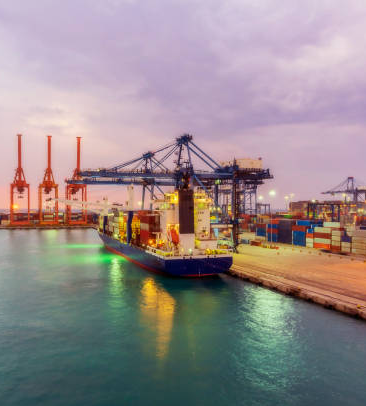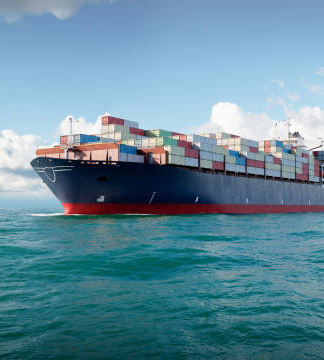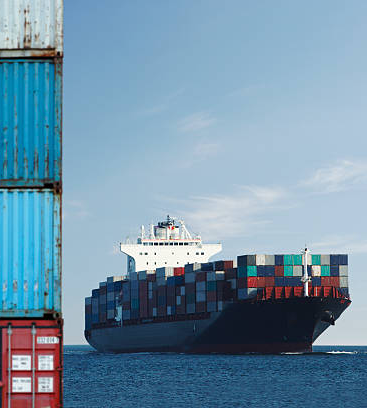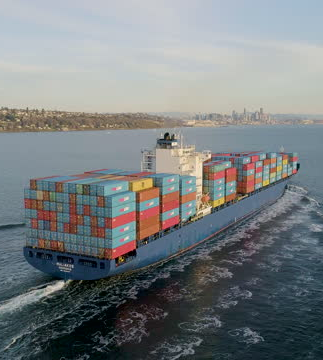Globālā starptautiskā eksprespiegāde
MLH Logistics piedāvā nevainojamus starptautiskos eksprespiegādes pakalpojumus, nodrošinot, ka jūsu sūtījumi ātri un efektīvi sasniedz galamērķi neatkarīgi no tā, uz kuru pasaules vietu tie dodas.

Sadarbojoties ar MLH Logistics, jūs izmantojat milzīgu nozares pieredzi, kā arī komandu, kuras mērķis ir uzlabot jūsu piegādes ķēdes pārvaldību. Neatkarīgi no tā, vai jums ir nepieciešami ātri piegādes laiki, specializēta apstrāde vai pielāgotas maršrutēšanas iespējas – meklējiet mūsu nepārspējamos īpašos kravu pārvadājumu risinājumus. Katrā brauciena posmā uzticieties uzņēmumam MLH Logistics par izcilu servisu un atbalstu, kas jūsu preces droši nogādās galamērķī laikā.

Mēs esam ļoti lepni, ka esam speciālo līniju kravu pārvadājumu pakalpojumu sniedzēji numur viens. Mēs apzināmies, ka šajā jomā darbojas arī citi uzņēmumi. Tomēr neviens nevar konkurēt ar mums, kad runa ir par to. Šādos gadījumos mums ir lielāka pieredze nekā jebkuram citam iesaistītajam uzņēmumam, un tāpēc mēs zinām, kas nepieciešams, lai nodrošinātu, ka klienti gadu no gada atgriežas gadu no gada uz visiem laikiem un uz mūžību. Mūsu komanda sastāv no speciālistiem, kuri vienmēr darīs visu iespējamo, lai izpildītu visas Jūsu prasības, izmantojot mūsu pakalpojumus kravu pārvadāšanai pa speciālajām līnijām; viņi nepadosies, kamēr nebūs izpildītas visas iespējamās vajadzības! Izvēlieties mūs un nekad neatskatieties atpakaļ, jo neviens cits par šo jomu nezina vai nav tik daudz prasmju kā mēs!

Jebkurai konkrētai kravai jums ir nepieciešami visefektīvākie transporta veidi. Uzņēmumā MLH Logistics katrs sūtījums tiek uztverts kā iespēja kalpot kā nekad agrāk. Mēs piešķiram prioritāti drošībai, tāpēc jums var uzticēt savu kravu vai mantas. Būt nozares līderim mums ir liela goda lieta, un tas nozīmē, ka nav robežu, cik lielus uzlabojumus mēs varam panākt savā darbībā, līdz tiek sasniegta pilnība. Neviens no mūsu profesionāļiem neņems pārtraukumu, līdz izstrādā nepārprotamu piegādes shēmu, kas atbilst visām jūsu vajadzībām, neko neatstājot novārtā.

Mēs saprotam, ka īpašām kravas līnijām nepieciešama nedaudz lielāka uzmanība MLH Logistics. Mēs nodrošinām drošu jūsu preču apstrādi, kad tās tiek nosūtītas, īpaši, ja tās ir augstas vērtības vai trauslas. Mūsu komandas eksperti parūpēsies, lai viss nonāktu galamērķī perfektā stāvoklī. Ar šo zināšanu klienti var atpūsties un koncentrēties uz citiem aspektiem, kas ir svarīgi viņu uzņēmumiem, zinot, ka viņu sūtījumi ir labi aprūpēti.

MLH Logistics ir starptautisks kravu ekspedīcijas uzņēmums, kas specializējas kuģniecības pakalpojumu sniegšanā. Mēs lepojamies ar savu spēju garantēt uzņēmumiem, kas sūta savas trauslās vai vērtīgās preces uz ārzemēm, bez problēmām. Ar plašu personālu mums ir visas nepieciešamās zināšanas un kontakti problēmu risināšanai. Izvēlēties mūs nozīmē jūsu sūtījuma drošību dažādās valstīs uzticēt mums.

Mūsu pamatdarbība ietver starptautisko eksprespakalpojumu (UPS/DHL/FEDEX) eksporta biznesu, ASV sūtījumus un ASV noliktavu pakalpojumus. 2018. gadā mēs kļuvām par UPS Hong Kong pirmā līmeņa aģentu un tieši sadarbojāmies ar UPS Hong Kong, lai nodrošinātu klientiem efektīvākus un rentablākus pakalpojumus. Mēs esam apņēmušies palīdzēt klientiem sasniegt viņu globālos biznesa mērķus, izmantojot efektīvus loģistikas risinājumus un izcilus pakalpojumus.
MLH Logistics piedāvā nevainojamus starptautiskos eksprespiegādes pakalpojumus, nodrošinot, ka jūsu sūtījumi ātri un efektīvi sasniedz galamērķi neatkarīgi no tā, uz kuru pasaules vietu tie dodas.
Ar spēcīgu klātbūtni Amerikas Savienotajās Valstīs, MLH Logistics piedāvā multimodālas transporta iespējas, apvienojot labāko sauszemes, jūras un gaisa transportu, lai optimizētu sūtījumu piegādi.
Mūsu specializēto klientu apkalpošanas pārstāvju komanda ir pieejama 24 stundas diennaktī, 7 dienas nedēļā, lai palīdzētu jums ar jebkuru no jūsu piegādes vajadzībām, nodrošinot izcilu pakalpojumu un atbalstu visā piegādes procesā.
MLH Logistics piedāvā personalizētus loģistikas risinājumus, kas pielāgoti jūsu unikālajām piegādes prasībām neatkarīgi no tā, vai sūtāt mazus vai lielus apjomus, kam seko gala piegāde līdz jūsu durvīm.
Speciālā līnijas kravas pārvadājumi attiecas uz speciālu logistikas risinājumu, kas veidots, lai atbilstu noteiktiem prasībām, piemēram, ātrākiem pārvadājumu laikiem, specializētam apstrādājumam vai unikālām maršrutas iespējām.
MLH Logistics īpašie kravu pārvadājumu pakalpojumi ir paredzēti, lai nodrošinātu lielāku elastību, ātrumu un pielāgošanu salīdzinājumā ar standarta kravu pārvadājumu pakalpojumiem. Tas var ietvert tiešus maršrutus, prioritāru apkalpošanu, samazinātu tranzīta laiku vai specializētu aprīkojumu, lai nodrošinātu drošu un savlaicīgu jūsu kravas piegādi.
MLH Logistics īpašie līnijas kravu pārvadājumi var uzņemt plašu preču klāstu, tostarp, bet neaprobežojoties ar augstvērtīgām precēm, laika ziņā jutīgiem sūtījumiem, bīstamiem materiāliem, ātrbojīgiem produktiem, lielgabarīta vai liekā svara kravām un trausliem priekšmetiem, kuriem nepieciešama īpaša piesardzība un uzmanība. transportēšanas laikā.
Jā, MLH Logistics piedāvā īpašus kravu pārvadājumu pakalpojumus no durvīm līdz durvīm, lai nodrošinātu nevainojamu un ērtu nosūtīšanas pieredzi mūsu klientiem. Mēs risinām visus transportēšanas procesa aspektus, sākot no saņemšanas vietā līdz piegādei galamērķī, ieskaitot muitošanu un visas nepieciešamās darbības ceļā.
MLH Logistics ļoti nopietni uztver jūsu preču drošību. Mēs sadarbojamies ar uzticamiem pārvadātājiem, izmantojam stingras iekraušanas un apstrādes procedūras un izmantojam drošas iepakošanas metodes, lai samazinātu bojājumu vai zuduma risku transportēšanas laikā.


